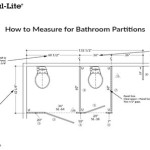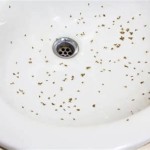Bathroom Sink Porcelain Repair: Restoring Beauty and Functionality
A porcelain bathroom sink is a staple in many homes, offering a sleek and durable surface for daily hygiene. However, over time, these sinks may succumb to wear and tear, developing cracks, chips, or scratches. These imperfections not only affect the aesthetic appeal but can also compromise the sink's functionality. Fortunately, repairing porcelain bathroom sinks is a feasible task, allowing homeowners to restore their sinks to their former glory. This article will delve into the various techniques and considerations involved in bathroom sink porcelain repair.
Understanding the Damage
Before embarking on any repair process, it is crucial to accurately assess the extent and nature of the damage. Minor chips or scratches can be easily addressed with readily available repair kits. However, larger cracks or deep gouges may require more intensive solutions, potentially involving professional assistance. Here are some key aspects to consider:
- Size and Depth: Small chips and shallow scratches can often be repaired effectively with epoxy resin or porcelain repair kits. Deeper cracks or significant gouges may necessitate specialized techniques or professional intervention.
- Location: The location of the damage can influence the repair process. Damage near the rim or drain area may pose greater challenges due to the sink's contours and the proximity of plumbing fixtures.
- Type of Damage: Hairline cracks can sometimes be repaired using specialized crack fillers. However, deeper cracks may require more extensive measures, such as using epoxy resin or consulting a professional.
Once the damage has been thoroughly assessed, you can choose the most appropriate repair method.
Repairing Minor Damage
For minor chips, scratches, or hairline cracks, commercially available porcelain repair kits offer a convenient and effective solution. These kits typically contain two main components: a resin and a hardener. The resin acts as a bonding agent, while the hardener ensures the repair is durable and resistant to water. The repair process is generally straightforward and involves:
- Clean the Damaged Area: Thoroughly clean the affected area with soap and water, ensuring it is free of dirt, grease, and debris. Allow it to dry completely before proceeding.
- Mix the Resin and Hardener: Follow the instructions provided by the manufacturer to mix the resin and hardener in the correct proportions. This mixture has a limited working time, so it is essential to work quickly and efficiently.
- Apply the Repair Mixture: Carefully apply the mixture to the damaged area, ensuring it fills the chip or scratch completely. Use a small spatula or putty knife to spread the mixture evenly.
- Smooth the Surface: Once applied, smooth the repaired area to create a seamless transition. Use a slightly damp cloth to remove any excess resin or hardener.
- Allow the Repair to Cure: Leave the repaired area undisturbed for the time recommended by the manufacturer. This allows the resin to harden and cure completely, ensuring a durable repair.
After the curing process, the repaired area can be sanded and polished to blend seamlessly with the surrounding porcelain.
Addressing Larger Cracks or Gouges
Larger cracks or significant gouges require more specialized repair techniques. Epoxy resin, known for its strong bonding properties and durability, is often used for these repairs. The process involves:
- Clean the Damaged Area: Clean the affected area with soap and water, ensuring it is free of dirt, grease, and debris. Allow it to dry completely before proceeding.
- Prepare the Crack: Use a small, sharp tool to widen the crack slightly, creating a groove for the epoxy resin to adhere properly. This ensures a secure bond.
- Mix the Epoxy Resin: Follow the manufacturer's instructions to mix the epoxy resin and hardener thoroughly. The working time for epoxy resin is typically longer than for porcelain repair kits, allowing for a more controlled application.
- Apply the Epoxy Resin: Carefully fill the crack or gouge with the epoxy resin, ensuring it fills the void completely. Use a small spatula or putty knife to spread the resin evenly.
- Smooth the Surface: Once applied, smooth the repaired area to create a seamless transition. Use a slightly damp cloth to remove any excess epoxy resin.
- Allow the Repair to Cure: Leave the repaired area undisturbed for the time recommended by the manufacturer. This allows the epoxy resin to harden and cure completely, ensuring a durable repair.
After the curing process, the repaired area can be sanded and polished to match the surrounding porcelain.
Professional Intervention
For extremely deep cracks or extensive damage, professional intervention may be necessary. Expert technicians have access to specialized tools and materials, including porcelain patching compounds and specialized epoxy resins, that can effectively repair even the most challenging damage. They can also ensure the repair is aesthetically pleasing and matches the original porcelain color and finish.

How To Patch A Porcelain Sink Himg Surface Repair

Gorgeous Shiny Things How To Repair A Porcelain Sink

Ceramic Porcelain Sink Repair True Value

Sink Repair Happy Tubs Bathtub

How To Repair A Hairline In Porcelain Sink 6 Simple Steps Follow

How To Fix A Ed Porcelain Sink 8 Steps Prudent Reviews

How To Repair A Hairline In Porcelain Sink 6 Steps

Magic 0 17 Oz Porcelain Chip Fix Repair For Tubs And Sinks 3007a The Home Depot

How To Repair A Porcelain Sink Cosmos Surfaces
How To Remove Scratches From A Porcelain Sink In 2024







